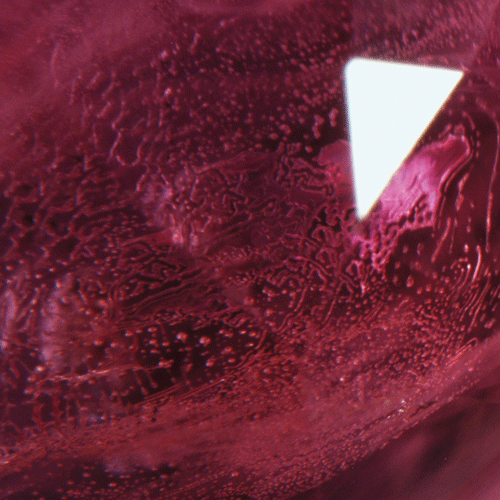|
Gemstones
Articles from GEMSET JEWELLERY (320 Articles), GEMMOLOGICAL SERVICES (22 Articles)

Glass-filled rubies
Avoid headaches from glass-filled rubies
 3.6 k views | Posted March 01, 2013 3.6 k views | Posted March 01, 2013 |
Lead glass-filled rubies, currently available in large numbers in
Australia, are causing serious issues for jewellers, suppliers and
retailers alike.
The problem is that the glass-filled treated rubies are not 100 per cent stable and therefore not as robust as untreated gemstones. This means they can be damaged easily under typical jewellery-manufacturing or repair conditions.
For instance, glass-filled stones cannot tolerate the heat used to resize a ring, and jeweller solvents may also cause damage. Even household cleaning fluids can affect the treated gemstone.
Hence, it is important to warn unsuspecting consumers of both the treatment and its special requirements.
Jewellers and their sales staff must know the exact nature of the stone with which they are dealing, otherwise the stone could be damaged and legal and financial repercussions could ensue.
It is essential that suppliers, retailers, manufacturing jewellers and consumers are aware if the stone is glass-filled, so it is handled appropriately.
Apart from these purely practical considerations, Australian law compels full disclosure. Under the law, retailers must disclose any and all treatments. But some retailers are not aware of this.
The ACCC clearly states in its Advertising and Promotion in the Jewellery Industry guide that customers have the right to full disclosure when it comes to glass-filled rubies.
“The ACCC believes that a person could reasonably expect that any treatment of gemstones to enhance their aesthetic appearance and value will be disclosed to them if the treatment is either not permanent or creates special care requirements. For example, treatments such as diffusion coating, the application of colourless oil and epoxy-like resins and fracture-filling.”
Not complying with the ACCC requirements, even unknowingly, could have serious legal and economic implications for your business.
“In addition, the ACCC believes that businesses that fail to disclose treatments, when the treated gemstones are worth substantially less than an equivalent untreated gemstone, may also risk contravening the misleading and deceptive conduct provisions of the Act."
What precisely is a lead glass-filled ruby?
According to GAA presenter Ted Themelis, who delivered a series of seminars on such treatments in 2011, it is low grade ruby that has been heat-treated with additives like lead, bismuth and tantalum to produce a glass-like substance that conceals cracks, producing a better looking ruby at a relatively inexpensive price.
Natural or synthetic quenched crackled corundum may also be the starting material. Stones of up to more than 120 carats are subject to such treatments.
The gemstones may also be retreated with beryllium and other methods to further improve the colour.
Some glass-filled rubies contain so much lead they are considered composite stones.
How do you identify a glass-filled ruby?
If you buy in Australia as a retailer or supplier, it should be disclosed to you and written on your receipt or invoice.
The first generation of this enhancement can be detected quite easily through a x-10 loupe or microscope. Surface-reaching cracks, internal glass bubbles and a typical bluish “flash-effect” may be visible.
However, glass filling can be confused with other similar treatments that include the use of fluxes that help to heal fractures and fissures in rubies. With these treatments, the "flash effect" may not be present. The GAA has seen treated stones in jewellery ranging from inexpensive Indian silver jewellery to higher-priced antique jewellery.
To help identify treated rubies, or for more information, contact your local gemmologist. Find a gemmologist at www.gem.org.au.
|
|
|
|